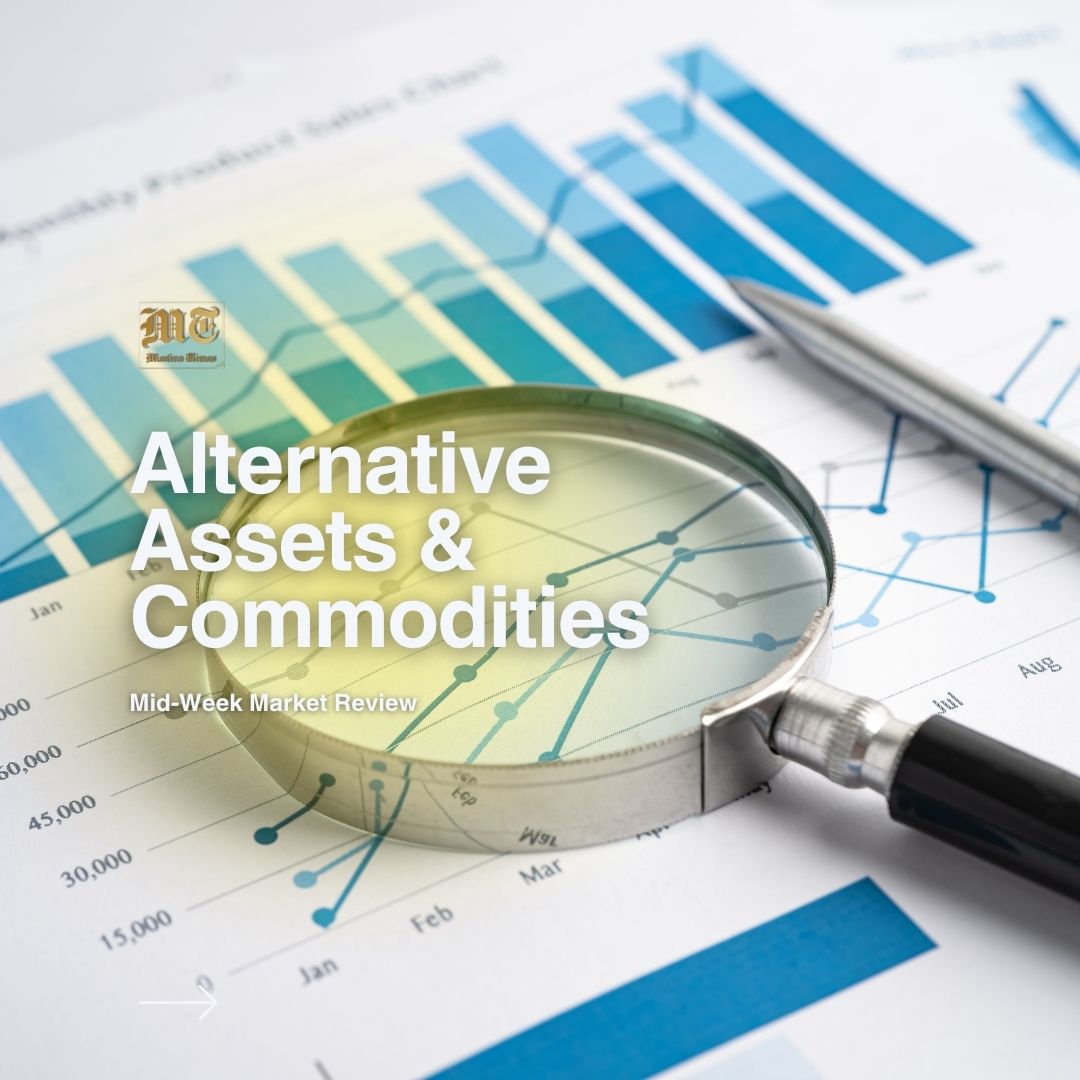

Crude oil prices rallied on Friday, advancing over 2% per barrel to secure their first weekly gain in three weeks. Brent crude futures settled at $66.62 per barrel, rising by 2.12%, while West Texas Intermediate (WTI) ended the session at $64.77, up by 2.40%. On a weekly basis, Brent gained 4.26% and WTI surged 6.55%, reversing the bearish sentiment that had prevailed in the preceding fortnight.
This recovery followed OPEC+’s May 31st decision to proceed with the planned production increase of 411,000 barrels per day (bpd) in July. The group notably rejected Saudi Arabia’s push for a steeper output hike, reaffirming its strategic intent to recover market share incrementally rather than flood the market. The restraint exercised by the cartel reflects ongoing concerns about demand stability and geopolitical unpredictability.
By Monday, oil extended its gains. Brent crude climbed a further 0.74% to close at $67.11 per barrel, while WTI advanced 0.88% to $65.34. This sustained bullish momentum was underpinned by optimism surrounding renewed US-China trade negotiations. Following a high-level phone call between Presidents Trump and Xi, officials from both nations are expected to meet in London, stoking hopes of a de-escalation in tariff-related tensions that have weighed on global demand forecasts.
Days | Brent | WTI |
Friday – 06/06/2025 | $66.62 | $64.77 |
Monday – 09/06/2025 | $67.11 | $65.34 |
Tuesday – 10/06/2025 | $66.87 | $64.80 |
The US labour market also offered a shot of confidence. Friday’s jobs report indicated underlying strength, helping to allay fears of a slowdown that could threaten energy consumption. However, China’s export performance tells a more cautious story: growth slowed to a three-month low in May due to ongoing US tariffs. Meanwhile, China’s crude oil imports dipped to their lowest daily average in four months, as scheduled maintenance at both state-owned and independent refineries curbed demand.
Heightened geopolitical risk remains a key driver of oil market sentiment. Over the weekend, Russia escalated hostilities by launching a significant drone and missile barrage on Kyiv and other Ukrainian targets. This retaliation followed a surprise Ukrainian strike on Russian airbases days prior. The likelihood of prolonged sanctions on Russian energy exports continues to weigh heavily on global supply projections, adding further bullish pressure to oil prices.
In the early hours of Wednesday, Brent crude oil futures hovered near $67 per barrel as markets weighed uncertainty over the finalisation of a US-China trade agreement. On the other hand, WTI crude oil futures traded around $65 per barrel. Officials from both countries announced a framework to restore their trade truce, though both sides are still seeking leaders’ approval before proceeding with implementation. Further exerting pressure on prices were rising forecasts for global inventory builds.
The Energy Information Administration (EIA) projected oil inventories will increase by an average of 0.8 million barrels per day in 2025 (0.4 million bpd higher than last month’s estimate), citing slowing demand growth alongside expectations that supply will outpace consumption following OPEC+’s planned production hike. Meanwhile, American Petroleum Institute (API) data showed that US crude inventories fell by 0.37 million barrels last week, defying expectations for a 0.7 million-barrel increase.
As a major crude exporter, Nigeria remains highly sensitive to the flows of the international oil market. The recent uptick in prices offers welcome fiscal breathing room, particularly in light of the government’s constrained revenue base. However, production shortfalls, persistent oil theft in the Niger Delta, and chronic infrastructural underinvestment limit Nigeria’s ability to fully capitalise on bullish market trends.
While higher oil prices boost Dollar inflows and external reserves, today’s global market is driven as much by geopolitical risks as by fundamentals. Nigeria must strike a delicate balance: maintaining production, safeguarding critical infrastructure, and preparing for external shocks that could derail budgetary projections tied to oil revenues.
From June 4 to June 10, 2025, the cryptocurrency landscape witnessed significant developments across markets, regulation, innovation, and institutional adoption globally. Here’s your in-depth, high-level briefing:
Bitcoin remained range-bound just under the $110K mark, showing consolidation after a near 50% sharp surge earlier this year.
Date | Open ($) | High ($) | Low ($) | Close ($) |
June 10, 2025 | 110,300 | 110,370 | 108,360 | 108,770 |
June 9, 2025 | 105,780 | 110,650 | 105,330 | 110,300 |
June 8, 2025 | 105,560 | 106,450 | 105,010 | 105,780 |
June 7, 2025 | 104,400 | 105,911 | 103,911 | 105,620 |
June 6, 2025 | 101,570 | 105,306 | 101,127 | 104,400 |
June 5, 2025 | 104,750 | 106,000 | 100,421 | 101,520 |
June 4, 2025 | 105,434 | 105,997 | 104,232 | 104,731 |
Ethereum briefly broke above $2,700, buoyed by DeFi momentum and ETF inflows boosting sentiment. Altcoins like XRP jumped 10% over the weekend, while memecoins and Dogecoin showed partly technical-driven rallies.
Date | Open ($) | High ($) | Low ($) | Close ($) |
June 10, 2025 | 2,681.27 | 2,788.87 | 2,659.20 | 2,744.90 |
June 9, 2025 | 2,510.00 | 2,693.39 | 2,480.00 | 2,680.00 |
June 8, 2025 | 2,509.84 | 2,545.64 | 2,455.55 | 2,492.16 |
June 7, 2025 | 2,524.66 | 2,541.91 | 2,476.45 | 2,457.03 |
June 6, 2025 | 2,475.34 | 2,528.84 | 2,414.29 | 2,385.68 |
June 5, 2025 | 2,414.36 | 2,640.14 | 2,414.36 | 2,394.08 |
June 4, 2025 | 2,607.13 | 2,675.16 | 2,584.72 | 2,583.93 |
In the United States, momentum continued with the CLARITY Act advancing in the House, seen as a framework-defining bill despite concerns from former CFTC Chair Timothy Massad about potential overlaps ⎻ regulators like SEC and CFTC may act independently if Congress stalls. The GENIUS Act is also gaining traction ahead of a Senate vote. Meanwhile, the SEC is exploring formal DeFi regulation, advocating a shift from policing software to managing platform activities.
In Europe, France’s Societe Generale has announced USD CoinVertible, a dollar-pegged stablecoin built on Ethereum and Solana, launching later this summer, will mark the first of its kind from a major European bank. The UK’s FCA has proposed lifting its 2021 ban on retail investing in crypto-linked ETNs, signaling a more open stance—consultation closing in July. The FCA also appointed a new deputy CEO to oversee growing stablecoin and crypto oversight responsibilities.
Asia saw notable changes. In Singapore, MAS issued strict licensing requirements for DTSPs serving foreign clients, with a deadline of June 30 for penalties and a near-zero likelihood of approval for non-compliant. The Singapore High Court rejected WazirX’s restructuring following its $235 M hack, raising concerns about exchange resilience and consumer trust. The MAS also issued crypto wealth due diligence guidelines to ensure better investor protection.
The United Arab Emirates (UAE) enhanced its leadership in the digital asset space. Dubai’s VARA updated compliance rules, clarifying client‑asset custody, collateral, custodianship, and AML protocols ahead of a June deadline. The Central Bank of UAE-backed AE Coin the country’s first regulated stablecoin, began roll-out, accepted for payments by Air Arabia, and backed by major financial institutions. Additionally, Ripple received a DFSA license to offer its stablecoin RLUSD services, and partnerships with Zand Bank and Mamo illustrate a deepening cross-border payment ecosystem.
The UAE also topped global crypto-friendly rankings, credited to forward-thinking regulation and innovative drive. In Canada, crypto regulation continued to evolve, with ETFs receiving official approvals and blockchain integration gaining traction in financial infrastructure. In India, the RBI reaffirmed its cautious stance on cryptocurrency, citing financial stability risks amid ongoing policy reviews.
On the institutional front, Eric Trump backed American Bitcoin Mining disclosed a reserve of 215 BTC and plans for further accumulation via miner partnerships. In the interim, global stablecoin usage has exceeded 161 million users, with a 54% year-over-year supply growth, 2025 is poised as the breakout year for stablecoin adoption. Security and compliance developments included expanded global crypto tax-reporting standards under the OECD’s CARF framework, set to begin enforcement in many countries by January 2026.
In summary, markets showed healthy consolidation, while regulatory clarity improved across the U.S., Europe, UAE, and Asia, though more caution emerged in Singapore. Institutional participation continues to ramp up, with traditional banks, treasury-backed stablecoins, and regulated entities expanding crypto’s mainstream footing. Stablecoins and cross-border payments remain key growth areas, validated by major government and corporate initiatives.
Without a doubt, cryptocurrency is moving steadily into the mainstream. Regardless of geography or current regulatory stance, it’s increasingly clear that hundreds of millions of people globally will adopt digital assets, either for payments, investment, or innovation. The path forward now calls for clearer regulatory guidance and broader public understanding to support this growth, enabling responsible, high-level adoption at a universal scale.
Quotes
The change we wish to see...
An opportunity lies before us; “OPEC” is increasing production.
This is when we can fill our coffers with foreign reserves and boost our economy. Some big world oil exporters are dealing with homeland issues and cannot meet up. The demand is greater than the supply.
Nigeria can tap into this, but can she? She is hunted by her demons.
Vandalism, greed, looting, and theft in the oil fields seem to be the order of the day. If only every Nigerian could wear this quote in their hearts: “What can I do for my country?“ NOT “What’s in it for me?” We would be in a better place and truly be the change we wish to see in every Nigerian.
By: Sandra A. Aghaizu